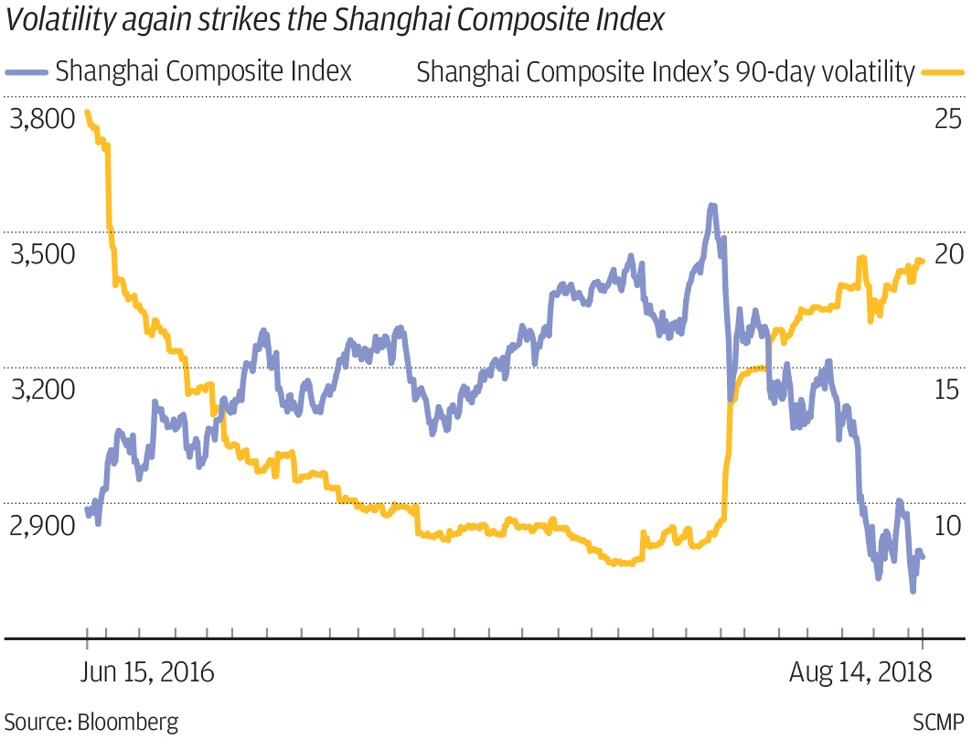
Traders brace for a rough ride as volatility returns to China’s once-placid stock market

China’s stock traders and investors are bracing themselves for a rough ride as volatility returns to the tightly ring-fenced exchanges in Asia’s second-largest capital market.
The benchmark Shanghai Composite Index swung by more than 2 per cent per day on 25 occasions so far this year, compared with two trading days in 2017 by the same measure, according to calculations by the South China Morning Post. The 90-day price swing on the index is now close to its highest level in two years, according to Bloomberg data.
What is driving the swings is the increased speed that news – both positive and negative – is being spread through social media networks and 24-hour news websites, and the advent of algorithmic trading that both amplify and accelerate transactions, traders and analysts said.
“The market is having a more volatile ride because both bad and good news were intertwined this year,” said Chen Hao, a strategist at KGI Securities in Shanghai. “There’s no consensus on the market outlook yet because of the uncertainty of the trade war and China’s domestic policies.”
The Shanghai Composite Index fell 2.1 per cent on Wednesday, heading for an 18 per cent decline so far this year, making it the second-biggest loser in local-currency terms out of 95 indexes tracked by Bloomberg. Only the BIST indexes of Turkey, which is facing a currency and debt crisis amid a diplomatic war with the US, fared worse.
The slump in the Shanghai and Shenzhen stock exchanges helped Japan to overtake China as the world’s second-largest capital market last month.

The roller-coaster ride has reminded Chinese traders of the market rout in 2015 that wiped out US$5 trillion of value when the Shanghai Composite Index plunged 45 per cent in two months.
It was not always like this. Chinese stocks were the least volatile last year, when government-backed investment funds propped up prices, while the regulator cracked down on short-selling, price manipulations and speculation.
Cushioned by rules that limited intraday price advances and declines to 10 per cent – and with only 30 per cent of stocks approved for short-selling – China’s stock market was a one-way bet. That imbued billions of yuan of market value on blue chip companies like Kweichow Moutai, a liquor distiller, and Ping An Insurance Group.
With the US likely to levy further tariffs on US$200 billion of Chinese goods by the end of August and traders weighing the initial impact of softened policies, the wild swing on Chinese stocks may not be ending any time soon.
“Investors are now pretty divided about the market outlook,” said KGI’s Chen. “So the volatile trend will probably continue until a direction is chosen.”